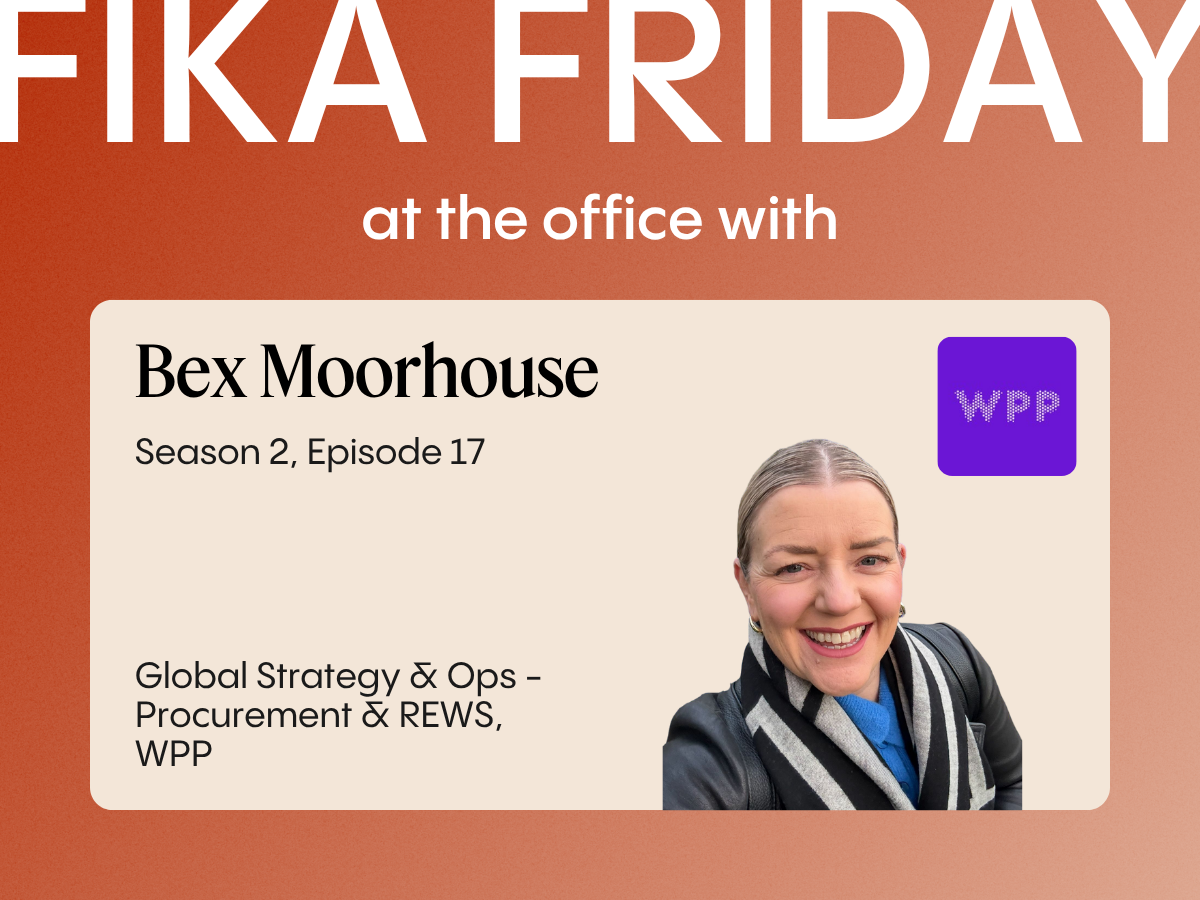Ricardo Chacon on the Goldilocks Office and Why Empty Spaces Harm Culture
Fika Friday Season 2, Episode 16

When Ricardo Chacon talks about office space, he doesn't mention square footage first. He talks about energy. About the low hum of an empty floor. About what happens when companies overspend on real estate and still fail their people.
Ricardo's path from Costa Rica to Singapore reads like a case study in cross-cultural workplace evolution. Trained as a civil engineer, he's worked through the full stack of corporate real estate: from construction materials supplier to global portfolio strategist at Standard Chartered and HP. Today, he runs Common Blue, a consultancy focused on making workplaces work better with less.
"Even if you spend all that money, you have more space than you need. That also harms the employee experience. Not because the office is too crowded, not because it's too noisy, but because the office is too empty."
We recorded this conversation over morning coffee, Ricardo's daily ritual, a non-negotiable inherited from Costa Rica's coffee culture. What emerged was a clear-eyed view of what companies get wrong about workplace strategy, and what they'll need to fix.
The Goldilocks Problem
Ricardo recently published an article on what he calls "the Goldilocks office." The premise challenges the dominant narrative around return-to-office mandates. Everyone worries about overcrowding. Almost no one considers the opposite risk.
When HSBC announced a £200 million spend to accommodate everyone back in the office, Ricardo saw it differently. If utilization remains low, that investment creates ghost towns: floors with energy so depleted that collaboration becomes forced, serendipity vanishes, and the cross-pollination of ideas stalls out.
The measurements we use don't capture this. You can't quantify the absence of energy. But people feel it immediately.
From Hierarchies to Agile Neighborhoods
Ricardo's first exposure to forward-thinking office design came through Standard Chartered's development centers in India. Eight to ten people around a shared table, personal screens, whiteboards within reach. No paper. No barrier desks. Just proximity and tools.
This was nearly a decade ago, when most financial institutions were still organizing space by rank. The scrum setup was space-efficient and visually striking, but more importantly, it was designed around how software developers actually work. Everything the team needed existed within their neighborhood. No dependencies. No friction.
That design philosophy stuck with him. It wasn't about aesthetics. It was about removing obstacles between intention and execution.
Retail vs. Back Office: Different Logics
After leading office strategy, Ricardo moved to retail real estate within the bank. The shift forced a recalibration. In back office environments, optimization makes sense; match space to actual utilization, reduce waste, reinvest savings. In retail, that logic breaks down.
A branch isn't measured by how many people walk through the door. Five visitors might represent more business value than five hundred, depending on who they are. The space serves as brand manifestation. Optimizing for efficiency misses the point entirely.
Ricardo describes it as a paradigm shift. Different constraints, different metrics, different stakes. Real estate teams that can't toggle between these modes will struggle.
What People Actually Hate About Hybrid
Ricardo is neither pro-mandate nor anti-office. He's pro-clarity. In his experience, companies succeed with fully remote models and fully on-site models, but only when expectations are explicit and consistent.
Hybrid fails when it's vague. When "three days a week" lacks structure, rhythm, or purpose. People don't resist commuting because they're lazy. They resist wasting time. Pre-pandemic, the commute was a given. Post-pandemic, it requires justification.
Singapore's efficient transit makes this less painful than London, where a single train trip costs enough to matter. But the psychological friction persists everywhere. Companies that treat hybrid as flexibility without framework will lose talent to competitors who provide both.
The AI Wildcard
Looking ahead to 2028, Ricardo expects a middle ground to solidify: somewhere between three and four days in-office for most companies. But he's watching AI's trajectory closely.
His bet: polarization. Some roles will be commoditized. Others will surge in value, those requiring creativity, boundary-pushing, hyper-creation. The latter group will demand different spaces, different amenities, different experiences. Prime locations with hyper-optimized design. Real birds, not recorded ones. Offices that engage multiple senses, not just sight.
This isn't luxury for luxury's sake. When competing for top talent globally, the office becomes a recruitment and retention lever. If the dependence exists, the investment needs to match.
Final Thoughts
Ricardo Chacon speaks in specifics. Not about trends or theories, but about the team that refused to leave the city center. About the fresh graduate doing a remote internship and missing the unspoken curriculum of office dynamics. About the moment you walk into a branch and understand what the bank believes.
For Ricardo, corporate real estate isn't about managing assets. It's about creating conditions for work that matters. And those conditions can't be standardized, they have to be earned, measured, and continuously refined.
This conversation reminded me that workplace strategy is ultimately about energy. Not the kind you measure with sensors, but the kind you feel when you arrive. When that energy is right, everything else follows.

.jpg)

